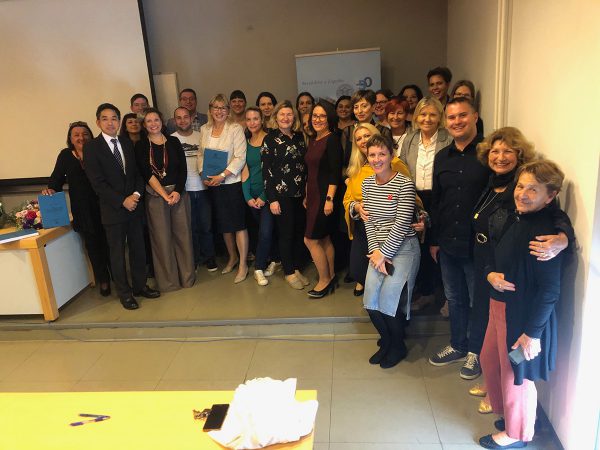Sandra Bischof Vukušić, Faculty of Textile Technology University of Zagreb
Nanotechnology is innovative driving force in many industries, including the textile industry. Findings in nanotechnology research have entered the development projects in textile research institutions and many of the developed methods are already introduced into the production. Creating nanostructures on the fibers and within the fibers or fabrics can be divided into two groups. On one side interventions in the production of fibers are possible, which usually means a modification of the volume of fibers, on the other side there are surface treatments of textiles such as plasma treatment, sol-gel process, microencapsulation or some other form of coating of nanoparticles on the surface of textile materials.
1. Fiber production
One of the nanotechnologies applied to the production of fibers is electro spinning. These fibers are typically used in:
- medicine (implants)
- high performance filters
- non-woven (technical) textiles
Incorporating inorganic particles in the bulk of fiber is expected to improve mechanical and physical properties, such as material strength or resistance to fire, UV rays, microorganisms, etc. Department of the basic natural and technical sciences has obtained an electro spinning device and the tests for high performance membrane have been carried on it.
2. Surface treatment of textiles
Fabrics can be surface functionalized or activated by plasma treatment.
From the procedural point of view we distinguish between low pressure and atmospheric plasma. This procedure has been developed for a long time but the wider practical application is still limited due to high investment costs.
At the Faculty of Textile Technology research is been made on low pressure plasma at the Department of fibers, materials and textile research. Furthermore, one of our Research Fellows has been researching coating of PLA films (biodegradable fiber made from corn) with Ag particles for antimicrobial protection. In this category of low pressure plasma treatment belongs a combination of micro and nanostructuring to achieve a so-called lotus effect (mimicking the structure of lotus leaf) as a self-cleaning material. Sol-gel process has been applied in the field of textiles for last decade and its most common purpose is to achieve the protective properties of materials: UV protection, ballistic protection, protection from penetration of chemicals, burning. Intervention in the field of magnetic properties and conductivity are also possible. Prerequisites for the wider use of this simple procedure are the reduction of solvents released during the process, the reduction of the temperature of condensation and compatibility of the sols with water. By means of microcapsules it is possible to add to textile materials a wide range of reagents with the proporties of contol release of active substances (fragrances, drugs) or with incorporated thermoregulating Phase Change Materials.
Conclusion:
Findings from the field of nanotechnology will have its contribution to the development of materials in all industries, including textile. New, value added products certainly have their place in the demanding European market and hence can increase the competitiveness of domestic Croatian products.
Here you can download whole presentation in pdf format.
[BACK]

